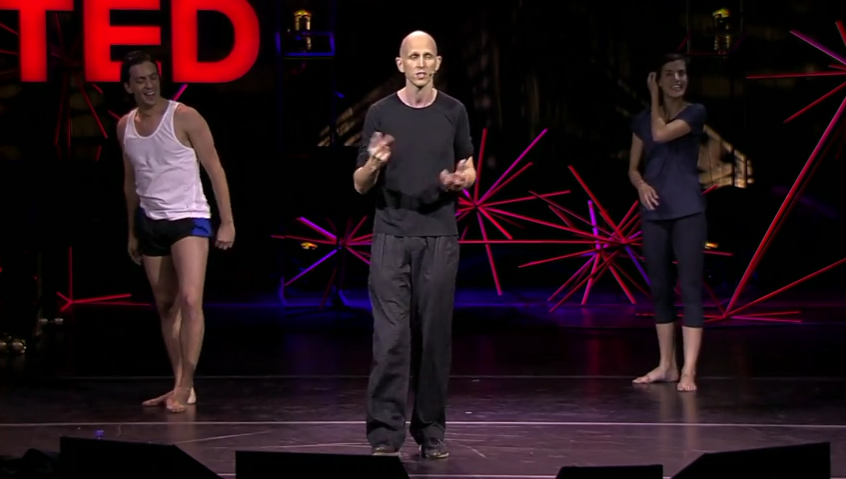Okay, brilliant. Okay, here we go. From the beginning, can we do our phrases first?
好,非常好。好,我們開始。從頭,我們可以先做我們的詞語嗎?
And then that. And we're going to build something now, organize it, the phrases.
然后再是那個。我們現在要組建一些東西,讓它有條理地成為一個流暢的詞語。
Here we go. Nice and slow? Ready and go...um.
我們開始。優美的,慢慢的開始。
The duet starts. So yeah, okay, good. Okay, nice, very nice.
雙人舞開始。對了,好的,好。好,很漂亮,非常漂亮。
So good. So--Okay. So that was--Well done.
太棒了。太——好的。剛才那是——干得漂亮。

That was the second way of working. The first one, body-to-body transfer, yeah, with an outside mental architecture that I work with that they hold memory with for me.
那是第二種創造模式。第一種,肢體對肢體的傳遞,把我展現出來的一個思維構架,他們存入記憶,為我保留。
The second one, which is using them as objects to think with their architectural objects,
第二種則是把他們當作物體來思考,他們的構架,
I do a series of provocations, I say, "If this happens, then that. If this, if that happens-- "
我發出一連串的提示,我會說,“如果這個發生了,那么怎樣。如果這個發生了,那么怎樣——”
I've got lots of methods like that, but it's very, very quick, and this is a third method.
我有很多類似那樣的方法,但它非常非常快,這是第三種方法。
They're starting it already, and this is a task-based method, where they have the autonomy to make all of the decisions for themselves.
他們已經開始了,這是一個任務型的方法,他們有自主權去做他們自己的決定。












